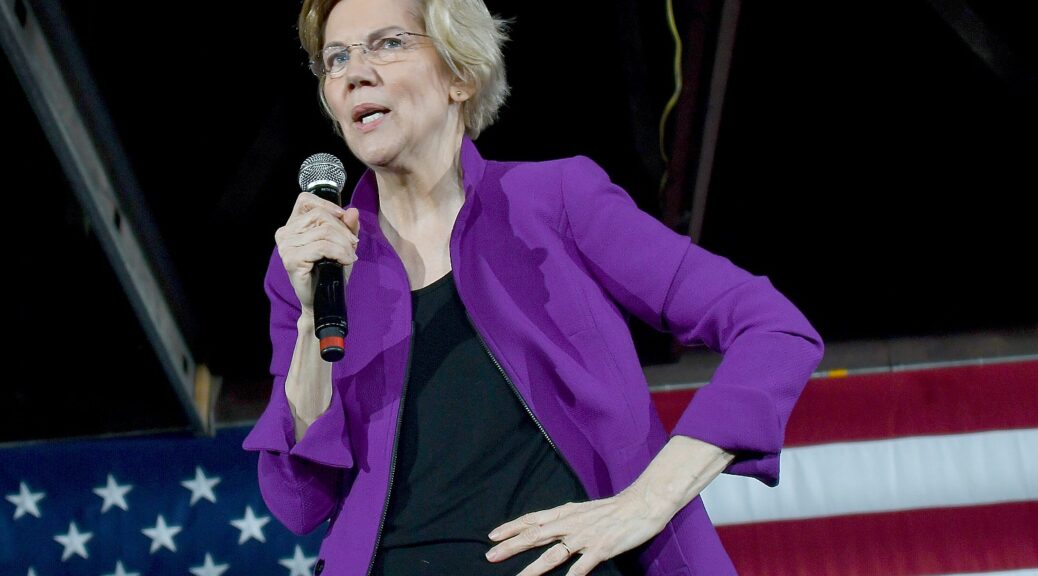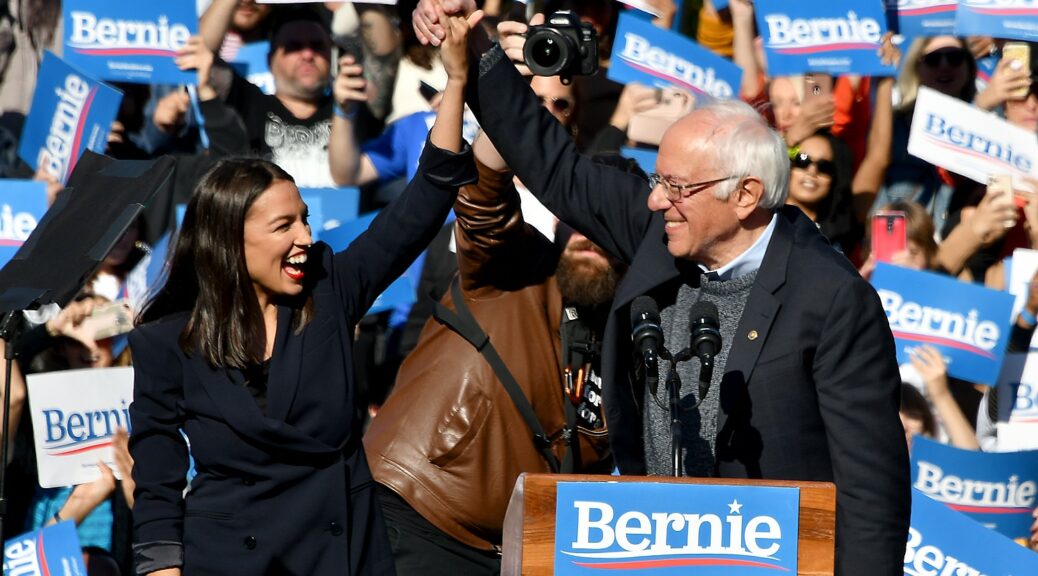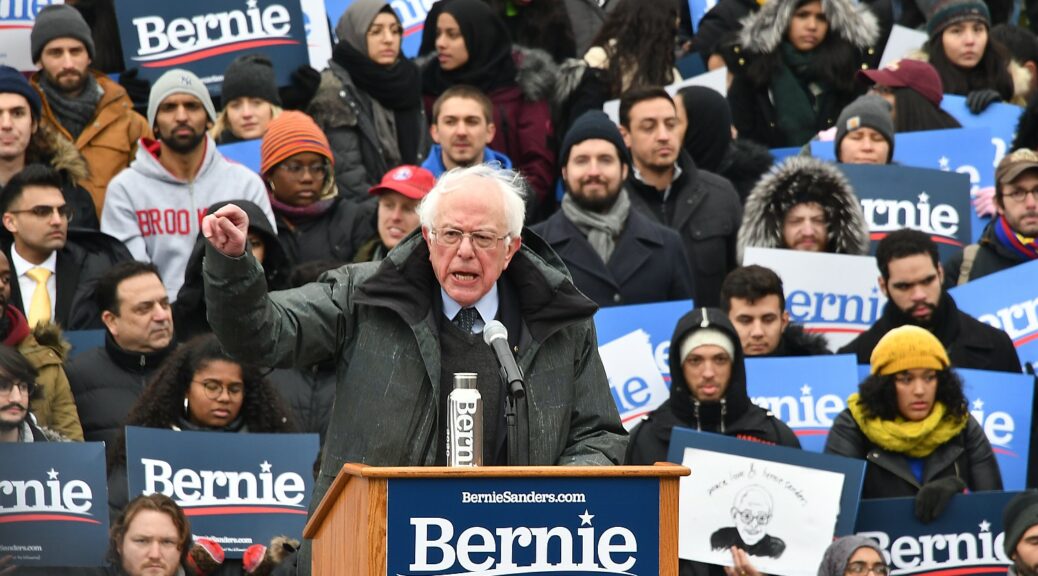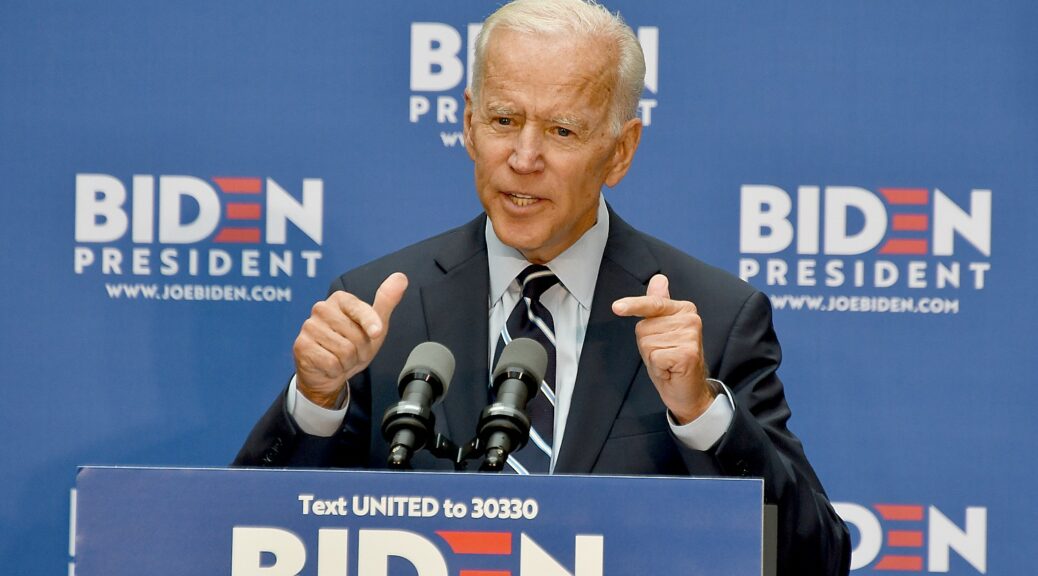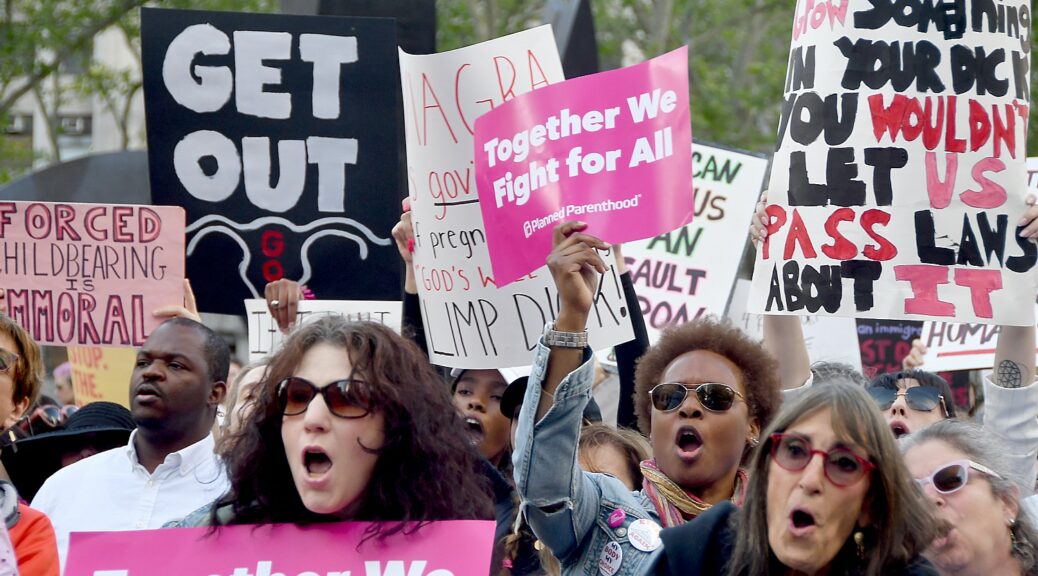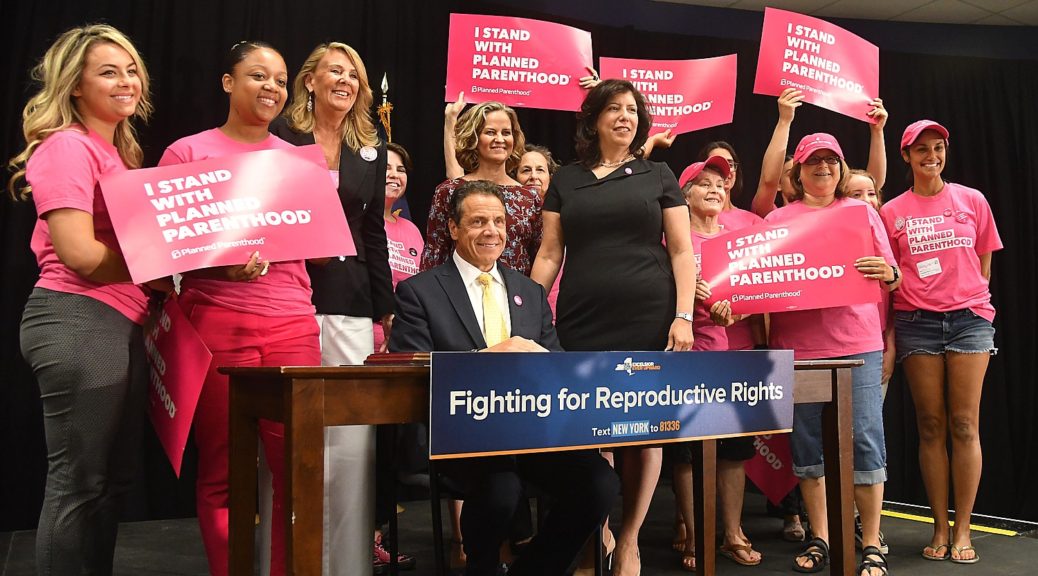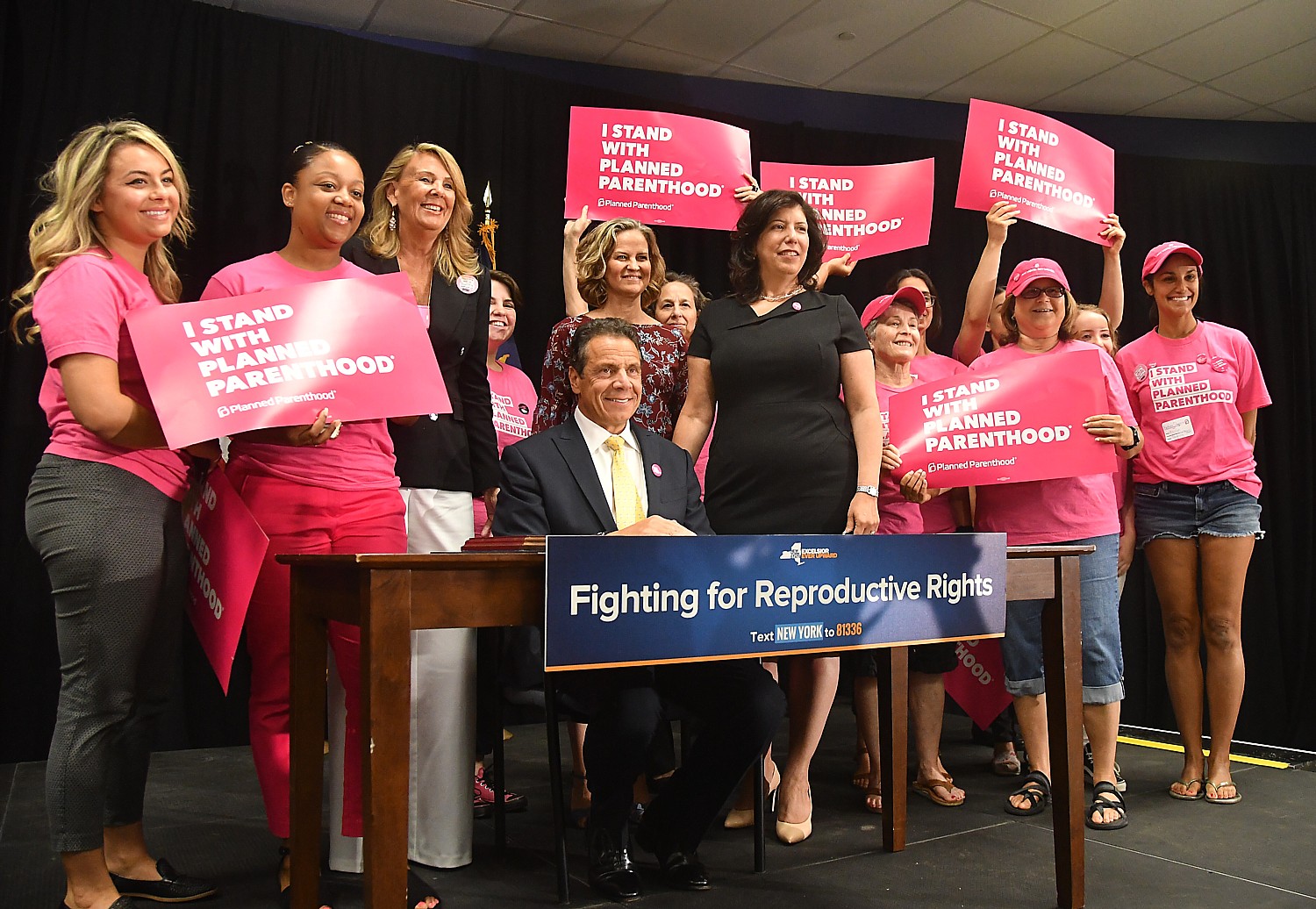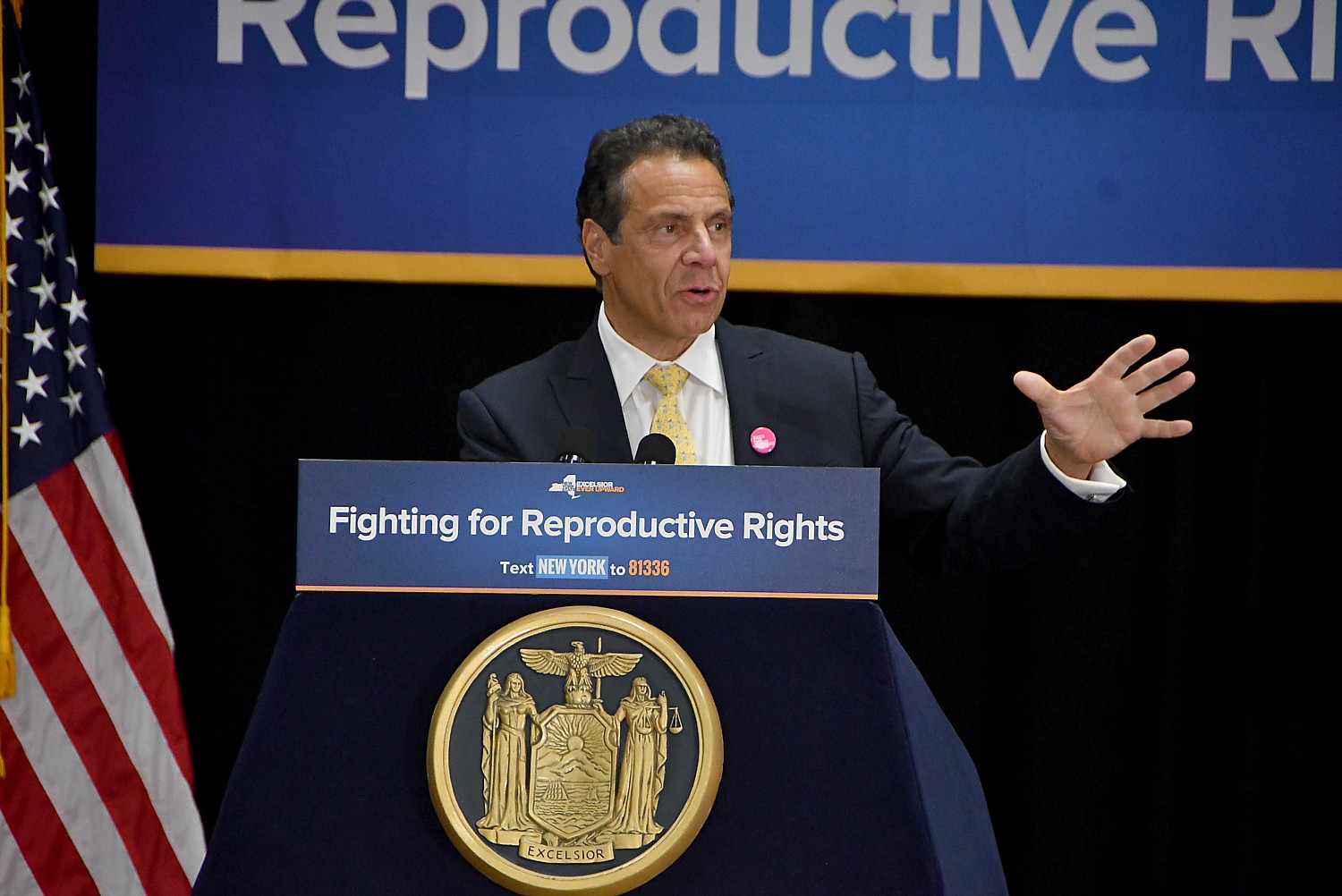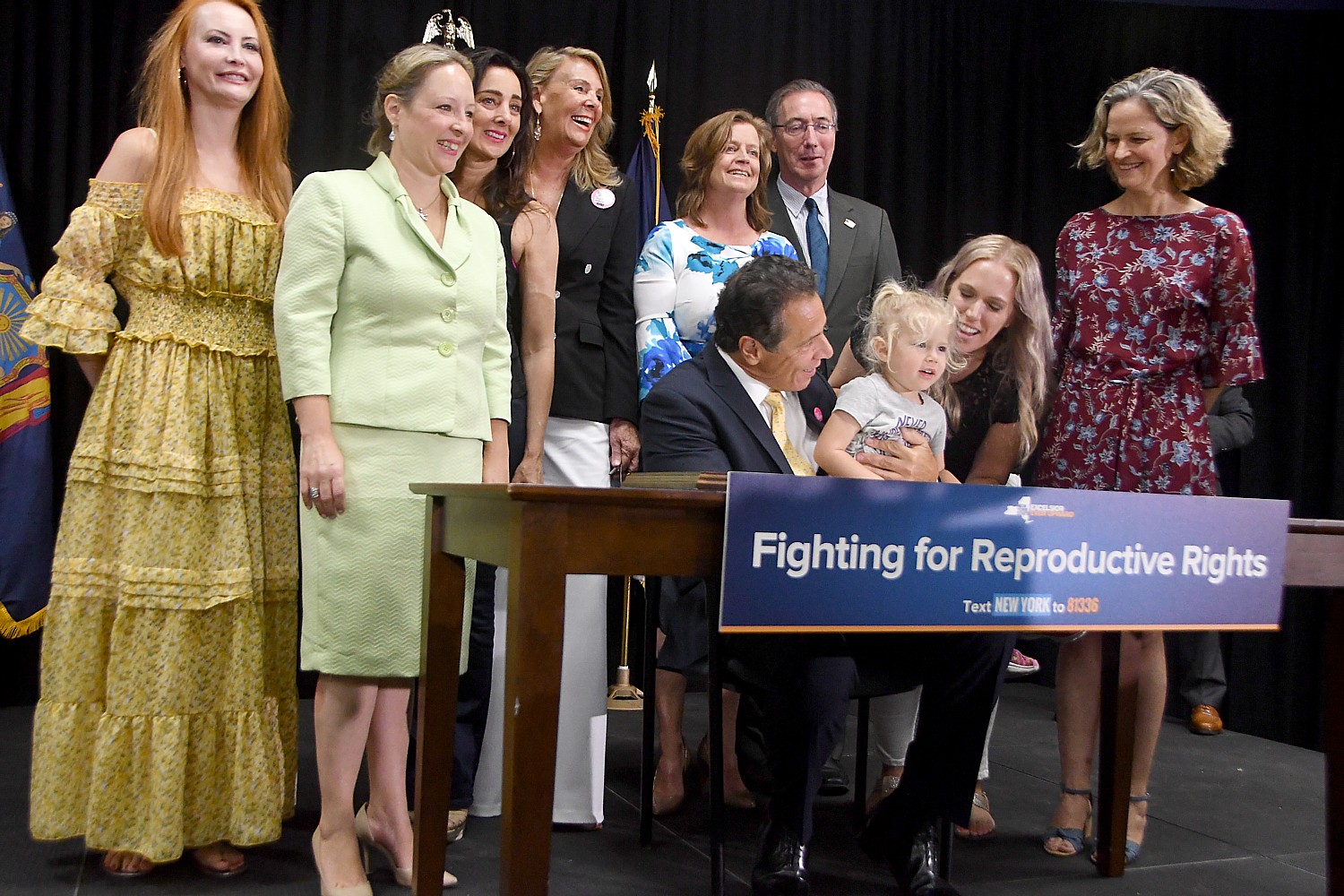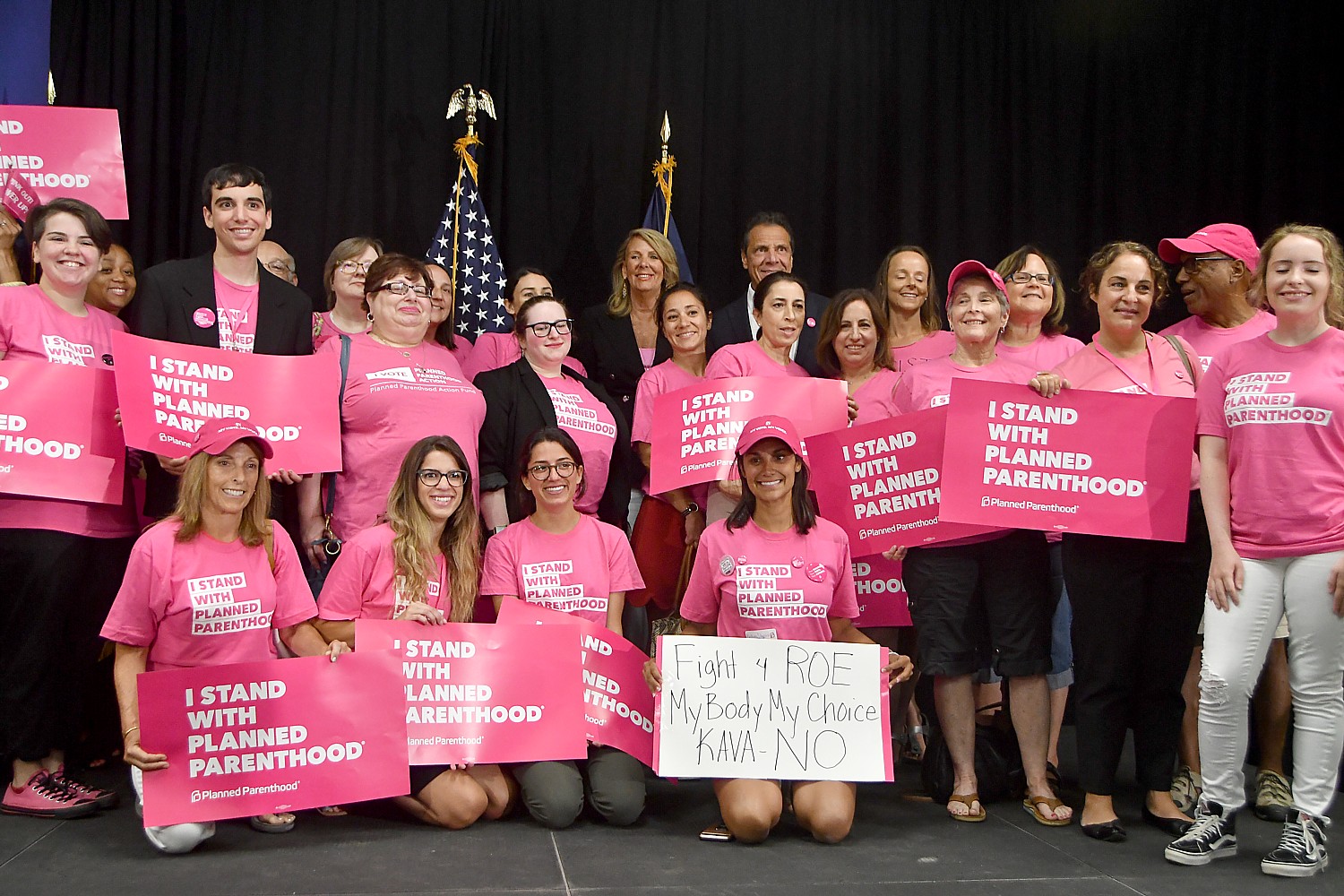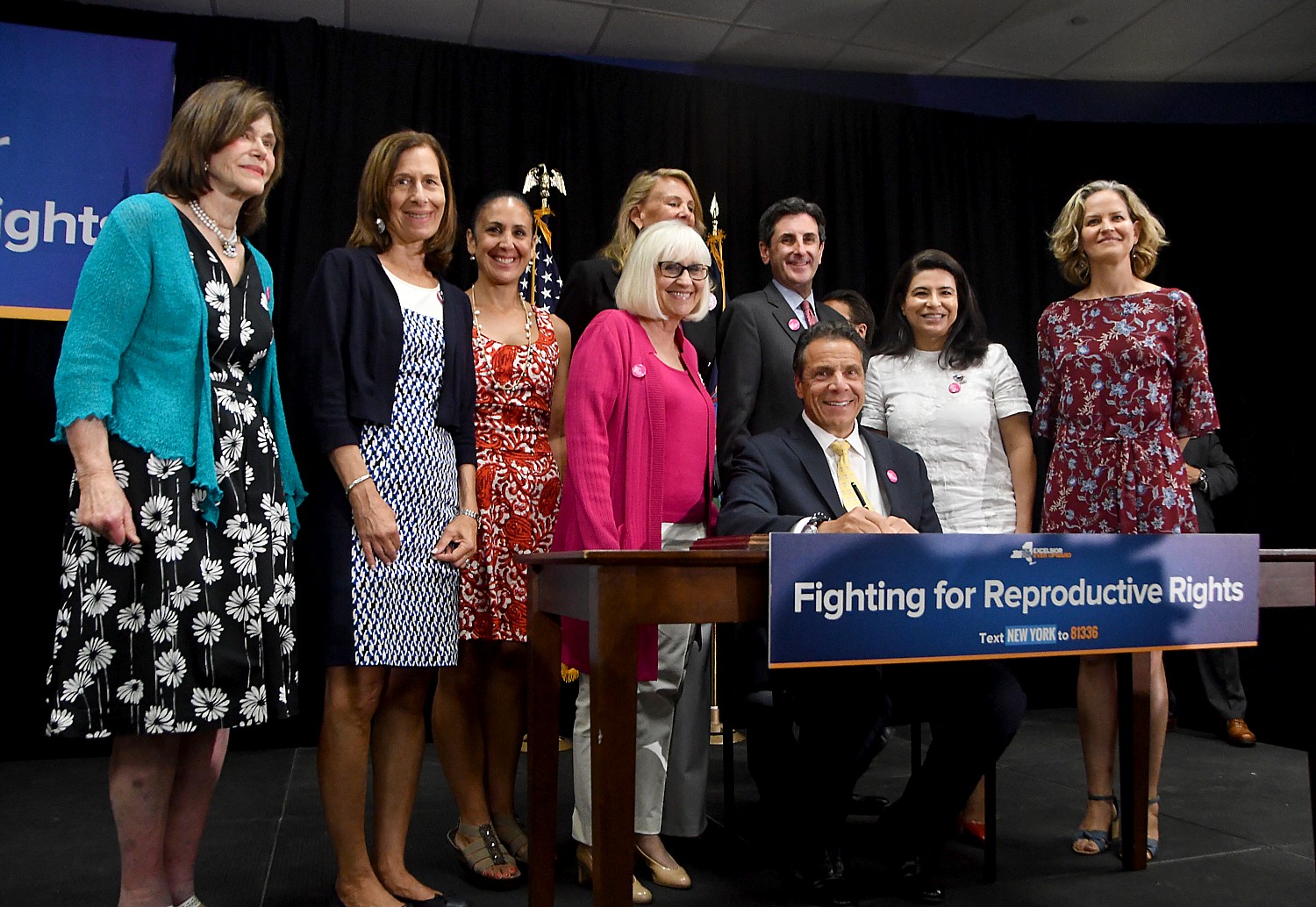
The vigorous contest of Democrats seeking the 2020 presidential nomination has produced excellent policy proposals to address major issues. Clearly responding to the backlash against her radical plan to finance Medicare for All, Senator Elizabeth Warren released details of how she would reduce health care costs in America, eliminate profiteering from the health care system, and complete a full transition to Medicare for All in her first term. Warren has already released her plan to fully finance Medicare for All when it’s up and running without raising taxes on the middle class by one penny.
“Medicare for All is the best way to guarantee health care to all Americans at the lowest cost. I have a plan to pay for it without raising taxes on middle class families, and the transition I’ve outlined here will get us there within my first term as president. Together, along with additional reforms like my plans to reduce black maternal mortality rates, ensure rural health care, protect reproductive rights, support the Indian Health Service, take care of our veterans, and secure LGBTQ+ equality, we will ensure that no family will ever go broke again from a medical diagnosis – and that every American gets the excellent health care they deserve. “
This is from the Warren campaign:
On Day One, Elizabeth will use her executive authority to:
Reverse Donald Trump’s sabotage of Obamacare
Improve the Affordable Care Act, Medicare, and Medicaid.
Protect people with pre-existing conditions
Drastically lower pharmaceutical costs for millions of families for drugs including Insulin, EpiPens, and drugs that save people from opioid overdoses.
The first bill Elizabeth will pass is her comprehensive set of anti-corruption reforms which include ending lobbying as we know it and knocking back the influence of Big Pharma and insurance companies.
And in her first 100 days, Elizabeth will use a fast-track legislative process called budget reconciliation to create a true Medicare for All option that will:
Include all the health care benefits of Medicare for All described in the Medicare for All Act.
Be immediately free for nearly half of all Americans, including:
Children under the age of 18
Families making at or below 200% of the federal poverty level (about $51,000 for a family of four)
Give every American over the age of 50 the choice to enter a substantially improved Medicare program.
Consumer costs will automatically decline, so eventually coverage under this plan will be free to everyone
Throughout her first term, she will fight for additional health system reforms to save money and save lives–including a boost of $100 billion in guaranteed, mandatory spending for new NIH research.
And no later than her third year in office, she will pass legislation to complete the transition to Medicare for All: guaranteed comprehensive health care for every American, long-term care, vision, dental, and hearing, with a single payer to reduce costs and produce better health outcomes.
Elizabeth’s plan can deliver an $11 trillion boost to families who will never pay another premium, deductible, or co-pay.
And her plan will protect unions and make sure that there’s support for workers affected by these changes.
Read more about her plan here and below:
My First Term Plan for Reducing Health Care Costs in America and Transitioning to Medicare for All
I spent my career studying why families went broke. I rang the alarm bells as the costs for necessities skyrocketed while wages remained basically flat. And instead of helping, our government has become more tilted in favor of the wealthy and the well-connected.
The squeeze on America’s families started long before the election of Donald Trump, and I’m not running for president just to beat him. I’m running for president to fix what’s broken in our economy and our democracy. I have serious plans to raise wages for Americans. And I have serious plans to reduce costs that are crushing our families, costs like child care, education, housing – and health care.
The Affordable Care Act made massive strides in expanding access to health insurance coverage, and we must defend Medicaid and the Affordable Care Act against Republican attempts to rip health coverage away from people. But it’s time for the next step.
The need is clear. Last year, 37 million American adults didn’t fill a prescription because of costs. 36 million people skipped a recommended test, treatment, or follow-up because of costs. 40 million people didn’t go to a doctor to check out a health problem because of costs. 57 million people had trouble covering their medical bills. An average family of four with employer-sponsored insurance spent $12,378 on employee premium contributions and out-of-pocket costs in 2018. And 87 million Americans are either uninsured or underinsured.
Meanwhile, America spends about twice as much per person on health care than the average among our peer countries while delivering worse health outcomes than many of them. America is home to the best health care providers in the world, and yet tens of millions of people can’t get care because of cost, forcing families into impossible decisions. Whether to sell the house or skip a round of chemo. Whether to cut up pills to save money or buy groceries for the week. The way we pay for health care in the United States is broken – and America’s families bear the burden.
We can fix this system. Medicare for All is the best way to cover every person in America at the lowest possible cost because it eliminates profiteering from our health care and leverages the power of the federal government to rein in spending. Medicare for All will finally ensure that Americans have access to all of the coverage they need – not just what for-profit insurance companies are willing to cover – including vision, dental, coverage for mental health and addiction services, physical therapy, and long-term care for themselves and their loved ones. Medicare for All will mean that health care is once again between patients and the doctors and nurses they trust–without an insurance company in the middle to say “no” to access to the care they need. I have put out a plan to fully finance Medicare for All when it’s up and running without raising taxes on the middle class by one penny.
But how do we get there?
Every serious proposal for Medicare for All contemplates a significant transition period. Today, I’m announcing my plan to expand public health care coverage, reduce costs, and improve the quality of care for every family in America. My plan will be completed in my first term. It includes dramatic actions to lower drug prices, a Medicare for All option available to everyone that is more generous than any plan proposed by any other presidential candidate, critical health system reforms to save money and save lives, and a full transition to Medicare for All.
Here’s what I’ll do in my first 100 days:
I’ll pursue comprehensive anti-corruption reforms to rein in health insurers and drug companies – reforms that are essential to make any meaningful health care changes in Washington.
I’ll use the tools of the presidency to start improving coverage and lowering costs – immediately. I’ll reverse Donald Trump’s sabotage of health care, protect individuals with pre-existing conditions, take on the big pharmaceutical companies to lower costs of key drugs for millions of Americans, and improve the Affordable Care Act, Medicare, and Medicaid.
I will fight to pass fast-track budget reconciliation legislation to create a true Medicare for All option that’s free for tens of millions. I won’t hand Mitch McConnell a veto over my health care agenda. Instead, I’ll give every American over the age of 50 the choice to enter an improved Medicare program, and I’ll give every person in America the choice to get coverage through a true Medicare for All option. Coverage under the new Medicare for All option will be immediately free for children under the age of 18 and for families making at or below 200% of the federal poverty level (about $51,000 for a family of four). For all others, the cost will be modest, and eventually, coverage under this plan will be free for everyone.
By the end of my first 100 days, we will have opened the door for tens of millions of Americans to get high-quality Medicare for All coverage at little or no cost. But I won’t stop there. Throughout my term, I’ll fight for additional health system reforms to save money and save lives – including a boost of $100 billion in guaranteed, mandatory spending for new NIH research over the next ten years to radically improve basic medical science and the development of new medical miracles for patients.
And finally, no later than my third year in office, I will fight to pass legislation that would complete the transition to full Medicare for All. By this point, the American people will have experienced the full benefits of a true Medicare for All option, and they can see for themselves how that experience stacks up against high-priced care that requires them to fight tooth-and-nail against their insurance company. Per the terms of the Medicare for All Act, supplemental private insurance that doesn’t duplicate the benefits of Medicare for All would still be available. But by avoiding duplicative insurance and integrating every American into the new program, the American people would save trillions of dollars on health costs.
I will pursue each of these efforts in consultation with key stakeholders, including patients, health care professionals, unions, individuals with private insurance, hospitals, seniors currently on Medicare, individuals with disabilities and other patients who use Medicaid, Tribal Nations, and private insurance employees.
And at each step of my plan, millions more Americans will pay less for health care. Millions more Americans will see the quality of their current health coverage improve. And millions more Americans will have the choice to ditch their private insurance and enter a high-quality public plan. And, at each step, the changes in our health care system will be fully paid for without raising taxes one penny on middle class families.
Every step in the coming fight to improve American health care – like every other fight to improve American health care – will be opposed by those powerful industries who profit from our broken system.
But I’ll fight my heart out at each step of this process, for one simple reason: I spent a lifetime learning about families going broke from the high cost of health care. I’ve seen up close and personal how the impact of a medical diagnosis can be devastating and how the resulting medical bills can turn people’s lives upside down. When I’m President of the United States, I’m going to do everything in my power to make sure that never happens to another person again.
The First 100 Days of a Warren Administration
Donald Trump has spent nearly every day of his administration trying to rip health coverage away from tens of millions of Americans – first by legislation, then by regulation, and now by lawsuit. When I take office, I will immediately work to reverse the damage he has done.
But I’ll do much more than that.
In my first 100 days, I will pick up every tool Donald Trump has used to undermine Americans’ health care and do the opposite. While Republicans tried to use fast-track budget reconciliation legislation to rip away health insurance from millions of people with just 50 votes in the Senate, I’ll use that tool in reverse – to improve our existing public insurance programs, including by giving everyone 50 and older the option to join the current Medicare program, and to create a true Medicare for All option that’s free for millions and available to everyone.
But first, we must act to rein in Washington corruption.
Anti-Corruption Reforms to Rein in Health Industry Influence.
In Washington, money talks – and nowhere is that more obvious than when it comes to health care. The health care industry spent $4.7 billion lobbying over the last decade. And health insurance and pharmaceutical executives have been active in fundraising and donating to candidates in the 2020 Democratic primary campaign as well.
Today, the principal lobbying groups for the drug companies, health insurers, and hospitals have teamed up with dozens of other health industry groups to create the Partnership for America’s Health Care Future – a front group whose members spent a combined $143 million on lobbying in 2018 and aims to torpedo Medicare for All in this election. The Partnership has made clear that “whether it’s called Medicare for All, Medicare buy-in, or the public option, one-size-fits-all health care will never allow us to achieve [our] goals.”
Let’s not kid ourselves: every Democratic plan for expanding public health care coverage is a challenge to these industries’ bottom lines – and every one of these plans is already being drowned in money to make sure it never happens. Any candidate who believes more modest reforms will avoid the wrath of industry is not paying attention.
If the next president has any intention of winning any health care fight, they must start by reforming Washington. That’s why I’ve released the biggest set of anti-corruption reforms since Watergate – and why enacting these reforms is my top priority as president. Here are some of the ways my plan would rein in the health care industry:
Close the revolving door. My plan will close the revolving door between health care lobbyists and government, and end the practice of large pharmaceutical companies like Novartis, United Health, Roche, Pfizer, and Merck vacuuming up senior government officials to try and monopolize government expertise, relationships, and influence during a fight for health care reform.
Tax excessive lobbying. My plan will also implement an excessive lobbying tax on companies that spend more than $500,000 per year peddling influence – like Pfizer, Amgen, Eli Lilly, Novartis, and Johnson & Johnson. Money from the tax would be used to strengthen congressional support agencies, establish an office to help the public participate in the rule-making process, and give our government additional resources to fight back against an avalanche of corporate lobbying spending.
End lobbyist bribery. My campaign finance plan will ban all lobbyists – including health insurance and pharma lobbyists – from trying to buy off politicians by donating or fundraising for their campaigns. This will shut down the flow of millions of dollars in contributions.
Limit corporate spending to influence elections. My plan bans all election-related spending from big corporations with a significant portion of ownership from foreign entities. That would block major industry players like UnitedHealth, Anthem, Humana, CVS Health, Pfizer, Amgen, AbbVie, Eli Lilly, Gilead, and Novartis – along with any trade associations that receive money from them – from spending to influence elections.
Crowd out corporate contributions with small dollar donations. I support a constitutional amendment to get big money out of politics. But until we enact it, my plan would institute a public financing program that matches every dollar from small donations with six more dollars so that congressional candidates are answering to the people who need health care and affordable prescription drugs, rather than health insurance and pharmaceutical companies.
Passing these reforms will not be easy. But we should enact as much of this agenda as possible, as quickly as possible. I will also use my executive authority to begin implementing them wherever possible – including through prioritizing DOJ and FEC enforcement against the corrupt influence-peddling game. And I will voluntarily hold my administration to the standards that I set in my anti-corruption plan so that all our federal agencies, including those involved in health care, serve only the interests of the people.
Money slithers through Washington like a snake. Any candidate that cannot or will not identify this problem, call it out, and pledge to make fixing it a top priority will not succeed in delivering any public expansion of health care coverage – or any other major priority.
Immediate Executive Actions to Reduce Costs and Expand Public Health Coverage.
There are a number of immediate steps a president can take entirely by herself to lower drug prices, reduce costs, and improve Medicare, Medicaid, and ACA access and affordability. I intend to take these steps within my first 100 days.
Dramatically Lower Key Drug Prices
As drug companies benefit from taxpayer-funded R&D and rake in billions of dollars in profits, Americans are stuck footing the bill. The average American spends roughly $1,220 per year on pharmaceuticals – more than any comparable country. As president, I will act immediately to lower the cost of prescription drugs, using every available tool to bring pressure on the big drug companies. I’ll start by taking immediate advantage of existing legal authorities to lower the cost of several specific drugs that tens of millions of Americans rely on.
Some drug prices are high because pharmaceutical companies jack up prices on single-source brand-name drugs, taking advantage of government-granted patents and exclusivity periods to generate eye-popping profits. Pharma giant Gilead, for example, launched its Hepatitis C treatment Harvoni at $94,500-per-twelve week treatment – leaving as many as 85 percent of more than 3 million Americans with Hepatitis C struggling to afford life-saving treatments.
The government has two existing tools to combat price-gouging by brand-name drug companies, in addition to tough antitrust enforcement against companies that abuse our patent system and use every trick in the book to avoid competition. First, the government can bypass patents (while providing “reasonable and entire compensation” to patent holders) using “compulsory licensing authority.” The Defense Department has used this authority as recently as 2014. Second, under the march-in provisions of the Bayh-Dole Act, the government can require re-licensing of certain patents developed with government involvement when the contractor was not alleviating health or safety needs. Just in this decade, federal research investments have contributed to the development of hundreds of drugs – all of which could be subject to this authority.
But new drugs aren’t the only unaffordable drugs on the market. Even older, off-patent drugs can be expensive and inaccessible. Lack of generic competition allows bad actors like Martin Shkreli to boost the prices of decades-old drugs. Some of the biggest generic drug companies in the country are now being sued by forty-four states for price-fixing to keep profits high. Limited competition and other market failures can also lead to drug shortages. Fortunately, the government can also act to fix our broken generic drug market by stepping in to publicly manufacture generic drugs, stopping price gouging in its tracks and bringing down costs..
On the first day of my presidency, I will use these tools to drastically lower drug costs for essential medications – drugs with high costs or limited supply that address critical public health needs. And during my administration, we will use these tools to make other drugs affordable as well.
Insulin was discovered nearly 100 years ago as a treatment for diabetes – but today the drug is still unaffordable for too many Americans. Eli Lilly’s brand-name insulin prices increased over 1,200% since the 1990s. Insulin costs are too high because three drug companies – Novo Nordisk, Sanofi, and Eli Lilly – dominate the market, jacking up prices. Americans with diabetes are rationing insulin, and taxpayers are spending billions on it through Medicare and Medicaid. It’s obscene. No American should die because they can’t afford a century-old drug that can be profitably developed for $72 a year. I will use existing authorities to contract for manufacture of affordable insulin for all Americans.
EpiPens deliver life-saving doses of epinephrine, a drug that reverses severe allergic reactions to things like peanuts and bee stings. Though epinephrine has been around for over a century, the pens that deliver it are protected by a patent that limits competition. In 2016, this lack of competition allowed Mylan, EpiPen’s manufacturer, to jack up EpiPen prices by 400%, leaving families unable to afford this life-saving medication. Though cheaper versions have recently entered the market, prices remain out of reach for many American families. As president, I will use existing authorities to produce affordable epinephrine injectors for Americans (and especially children) who need it.
Naloxone can reverse the effects of an opioid overdose. In 2017, more than 70,000 people died from a drug overdose in the United States, with the majority due to opioids. The opioid epidemic cost Americans nearly $200 billion in 2018, including more than $60 billion in health care costs. Health officials agree that naloxone is “critical” to curb the epidemic – but easy-to-use naloxone products like ADAPT Pharma’s Narcan nasal spray and Kaléo’s Evzio auto-injector are outageously expensive, and the approval of a generic naloxone nasal spray is tied up in litigation. Kaléo spiked the price of Evzio by over 550% to “capitalize on the opportunity” of the opioid crisis, costing taxpayers more than $142 million over four years. It doesn’t have to be this way: in 2016, it cost Kaléo just 4% of what it charged to actually make Evzio, and naloxone can be as cheap as five cents a dose. Both products benefited from government support or funds in the development of naloxone. My administration will use its compulsory licensing authority to facilitate production of low-cost naloxone products so first responders and community members can save lives.
Humira is a drug with anti-inflammatory effects used to treat diseases like arthritis, psoriasis, and Crohn’s disease. It is the best-selling prescription drug in the world, treating millions. AbbVie, Humira’s manufacturer, has doubled the price of Humira to more than $38,000 a year. In 2017, Medicaid and Medicare spent over $4.2 billion on it – while AbbVie, its manufacturer, developed a “patent thicket” to shield itself from biosimilar competition. In May 2019, the company entered into a legal settlement preventing a competitor from entering the U.S. market until 2023 – probably because prices went down by up to 80% once biosimilars entered in Europe. My administration will pursue antitrust action against AbbVie and other drug companies that pursue blatantly anti-competitive behavior, and, if necessary, use compulsory licensing authority to facilitate production, saving taxpayers billions.
Hepatitis C drugs like Harvoni are part of a class described as “miracle” drugs. Harvoni’s price tag – $94,500-per-treatment – left 85% of the more than 3 million Americans living with Hepatitis C without a lifesaving medication, while taxpayers foot a $3.8 billion bill. Although the price has come down in recent years, it is still expensive for too many. One estimate suggests that by using compulsory licensing, the federal government could treat all Americans with Hepatitis C for $4.5 billion – just 2% of the $234 billion it would otherwise cost. That is exactly what I will do.
Truvada is a drug that – until recently – was the only FDA-approved form of pre-exposure prophylaxis, which can reduce the risk of HIV from sexual activity by up to 99%. Truvada’s manufacturer, Gilead, relied on $50 million in federal grants to develop it, but today they rake in multi-billion dollar profits while Americans struggle to afford it. The CDC estimates a million Americans could benefit from Truvada, though only a fraction do today – largely due to to its $2,000-a-month price tag, which is nearly thirty times what it costs in other countries. My administration will facilitate the production of an affordable version – reducing HIV infections and saving taxpayers billions of dollars each year.
Antibiotics provide critical protection from bacterial and fungal infections, and we are in desperate need of new antibiotics to combat resistant infections. Every year, nearly three million Americans contract antibiotic-resistant infections – and more than 35,000 people die. But antibiotics don’t generate much money, discouraging pharmaceutical investment, causing shortages, and contributing to price hikes. Earlier this year, one biotech firm filed for bankruptcy after marketing a new antibiotic, Zemdri, for less than a year. My administration will identify antibiotics with high prices or limited supply and help produce them to combat resistance and provide patients with the treatments they need.
Drug shortages leave doctors and patients scrambling to access the treatments they need, forcing many to ration medications and use inferior substitutes. Our nation’s hospitals, for example, are currently experiencing a shortage of vincristine – an off-patent drug that is the “backbone” of childhood cancer treatment. The vincristine shortage began when Teva, one of its two suppliers, made the “business decision” to stop manufacturing the drug. When I am president, the government will track drugs in consistent shortage, like vincristine, and I will use our administrative authority to ensure we have sufficient production.
Finally, I will also direct the government to study whether other essential medicines, including breakthrough drugs for cancer or high-cost drugs for rare diseases, might also be subject to these interventions because they are being sold at prices that inappropriately limit patient access.
Make Mental Health and Substance Use Treatment A Reality
The law currently requires health insurers to provide mental health and substance use disorder benefits in parity with physical health benefits. But in 2018, less than half of people with mental illness received treatment and less than a fifth of people who needed substance use treatment actually received it. As president, I will launch a full-scale effort to enforce these requirements – with coordinated actions by the IRS, Centers for Medicare and Medicaid Services, and Department of Labor to make sure health plans actually provide mental health treatment in the same way they provide other treatment.
Reverse Trump’s Sabotage
I will reverse the Trump administration’s actions that have undermined health care in America. Key steps include:
Protecting coverage for people with pre-existing conditions. The Trump administration has abandoned its duty to defend current laws in court, cheering on efforts to destroy protections for pre-existing conditions, insurance coverage for dependents until they’re 26, and the other critical Affordable Care Act benefits. In a Warren administration, the Department of Justice will defend this law. And we will close the loopholes created by the Trump administration, using 1332 waivers, that could allow states to steer healthy people toward parallel, unregulated markets for junk health plans. This will shut down a stealth attack on people with pre-existing conditions who would see their premiums substantially increase as healthier people leave the marketplace.
Banning junk health plans. The Trump administration has expanded the use of junk health insurance plans as an alternative to comprehensive health plans that meet the standards of the ACA. These plans cover few benefits, discriminate against people with pre-existing conditions, and increase costs for everyone else. And in some cases they direct as much as 50 percent of patient premiums to administrative expenses or profit. I will ban junk plans.
Expanding ACA enrollment. I’ll re-fund the Affordable Care Act programs that help people enroll in ACA coverage, programs that have been gutted by the Trump administration.
Expanding premium tax credits. I will reverse the Trump administration rule that artificially reduced premium tax credits for many people, making coverage less affordable – and instead will expand these credits.
Rolling back Trump’s sabotage of Medicaid. I’ll reverse the Trump administration’s harmful Medicaid policies that take coverage away from low-income individuals and families. I’ll prohibit restrictive and ineffective policies like work requirements – which have already booted 18,000 people in Arkansas out of the program – as well as enrollment caps, premiums, drug testing, and limits on retroactive eligibility that can prevent bankruptcy.
Restoring non-discrimination protections in health care. I will immediately reverse the Trump administration’s terrible proposed rule permitting health plans and health providers to discriminate against women, LGBTQ+ people, individuals with limited English proficiency, and others.
Ending the Trump administration’s assault on reproductive care. I’ll roll back the Trump administration’s domestic and global gag rules, which deny Title X and USAID funding to health care providers who provide abortion care or even explain where and how patients can access safe, legal abortions. And I will overturn the Trump administration’s embattled proposed rule to roll back mandatory contraceptive coverage.
Strengthen the Affordable Care Act
As president I will use administrative tools to strengthen the ACA to reduce costs for families and expand eligibility. Key steps include:
Stop families from being kicked out of affordable coverage. Because of something called the “family glitch,” an entire family can lose access to tax credits that would help them buy health coverage if one parent is offered individual coverage with a premium less than 9.86% of their family income. I’ll work to make sure that a family’s access to tax credits is based on the affordability of coverage for the whole family – not just one individual – so families who don’t actually have access to affordable alternatives don’t lose their ACA tax credits.
Expand eligibility to all legally present individuals. I’ll also work to extend eligibility for ACA tax credits to all people who are legally present, including those eligible for the Deferred Action for Childhood Arrivals program.
Put money back in workers’ pockets. The Affordable Care Act requires insurance companies to spend at least 80 percent of total premium contributions on health care claims (and, in many cases, at least 85 percent), leaving the rest to be spent on plan administration, marketing, and profit. Insurers who waste money must issue rebates – but too often, these are returned to employers who don’t pass on the savings to their employees. Insurance companies are expected to pay out $1.3 billion in rebates in 2019, with employers in the small-group market receiving an average rebate of $1,190 and employers in the large-group market receiving an average rebate of $10,660. My plan will require employers to pass along the full value of the rebate directly to employees.
Strengthen Medicare
As president I will use administrative tools to strengthen Medicare:
Expand Dental Benefits. The Medicare statute prohibits coverage of dental care that is unrelated to other medical care, unless it is medically necessary. This has been interpreted to largely exclude any oral health care. As a result, almost two-thirds of Medicare beneficiaries, or nearly 37 million people, lack access to dental benefits. I will use my administrative authority to clearly expand the medically necessary dental services Medicare can provide, improving the health of millions of Medicare beneficiaries.
Stop private Medicare Advantage plans from bilking taxpayers. Roughly one-third of Medicare beneficiaries get coverage through a private Medicare Advantage plan. Medicare payments to these plans for each enrollee are supposed to reflect the cost of covering that person through traditional Medicare, but overwhelming evidence shows that these private plans make their enrollees appear sicker on paper than they actually are to earn inflated payments at the expense of taxpayers. Some suggest that this adds $100 billion or more to Medicare spending over ten years. My administration will put an end to this fraud.
Strengthen Medicaid
As president I will use administrative tools to strengthen Medicaid and potentially allow millions more to access the program.
Use waiver authority to increase Medicaid eligibility. With the approval of the federal government, states can use Section 1115 demonstration waivers to expand coverage to people who aren’t otherwise eligible for Medicaid. Currently, however, states can only obtain these waivers if projected federal spending under the new program will not be higher than without the waiver. While I pursue legislative reforms to expand coverage, I’ll also change this administrative restriction to allow these demonstrations to fulfill their promise of providing affordable health coverage, including working with states that want to expand Medicaid to uninsured individuals and families above the statutory upper limit of Medicaid (138% of the poverty level). Any state that chooses to expand in this way will not be penalized for doing so when full Medicare for All comes online.
Streamlining eligibility and enrollment. Far too many people miss out on Medicaid coverage because of red tape. Some states take coverage away if someone misses just one piece of mail or forgets to notify the state within 10 days of a change in income. These kinds of harsh policies help explain why more than a million children “disappeared” from the Medicaid and CHIP programs in the past year. I will eliminate these kinds of unfair practices, and instead work with states to make it easier for everyone – families, children, and people with disabilities – to maintain this essential coverage.
Ensuring access to care for beneficiaries in managed care plans. I’ll roll back the Trump administration’s proposed changes to rules regulating Medicaid managed care plans, which would dilute important standards, such as requiring health plans to maintain adequate provider networks guaranteeing access to care for Medicaid enrollees.
Antitrust Enforcement for Hospitals and Health Systems
For years, both horizontal mergers (where hospitals purchase other hospitals) and vertical mergers (where hospitals acquire physician practices) have produced greater hospital and health system consolidation, contributing to the skyrocketing costs of health care. Today, “not a single highly competitive hospital market remains in any region of the United States.” Study after study shows that mergers mean higher prices, lower quality, and increased inequality due to the growing wage gap between hospital CEOs and everyone else. Bringing down the cost of health care means enforcing competition in these markets.
As president, I will appoint aggressive antitrust enforcers who recognize the problems with hospital and health system consolidation to the Department of Justice and Federal Trade Commission. My administration will also conduct retrospective reviews of significant new mergers, and break up mergers that should never have taken place.
Bringing Health Records into the 21st Century
Congress spent $36 billion to get every doctor in America using electronic health records, but we still do not have adequate digital information flow in health care – in part because two big companies make up about 85% of the market for medical records at big hospitals. As they attempt to capture more of the market, these companies are making it harder for systems to communicate with each other. My administration will ramp up the enforcement against information blocking by big hospital systems and health IT companies, and I will appoint leaders to the FTC and DOJ who will conduct a rigorous antitrust investigation of the health records market, especially in the hospital space.
Elevating the Voices of Workers in the Transition to Medicare for All
The fundamental goal of my presidency will be returning power to working people. Medicare for All accomplishes that by giving every American high-quality coverage and freeing them from relying on the whims of their employers or private insurance companies for the health care they need. My plan to transition to Medicare for All will also put working people first, and elevate their voices at each stage of the process.
My plan seeks to build on the achievements of generations of working people and their unions who have fought for and won health care. I view good health plans negotiated through collective bargaining as a positive achievement for working people, and I will seek as part of the first phase of my plan the elimination of the excise tax on those plans.
In my first weeks in office, I will issue an Executive Order creating a commission of workers (including health care workers), union representatives, and union benefit managers that I will consult at every stage of the transition process. The commission will be responsible for providing advice on each element of the transition to Medicare for All, including, at a minimum:
Ensuring workforce readiness and adequate access to care across all provider types.
Determining national standards of coverage and benefits, including long-term care.
Learning from successful existing non-profit health care administrators and integrating them into the new Medicare for All system.
Ensuring a living wage for all health care workers and that savings generated within the new system by hospitals and other health care employers are shared fairly with all of the workers in the health care system.
Ensuring that workers are able to use the collective bargaining process during the transition period and under the new Medicare for All system to ensure both effective health outcomes and to ensure that savings generated by the new system are fairly shared with workers.
In administering the Medicare for All system, my administration will also rely on unions’ expertise on designing good benefits for workers and helping workers navigate our health care system. During the transition to Medicare for All – and even when we ultimately reach a full Medicare for All system – my administration will seek to partner with collectively bargained non-profit health care administrators. For example, we will draw upon their expertise in helping workers choose providers, and look for opportunities to enter into contracts with the administrators of unions’ collectively bargained health plans to provide these services. And my plan will guarantee that union-sponsored clinics are included within the Medicare for All system and will continue serving their members.
Finally, Medicare for All will be an enormous boost to the economy, lifting a weight off of both workers and businesses and creating good new jobs, including in administering health care benefits. Still, the Medicare for All legislation includes billions of dollars to provide assistance to workers who may be affected by the transition to Medicare for All, and I plan on consulting with the new worker commission and other affected parties to ensure that money is spent as effectively as possible. In the past, transition assistance programs have been underfunded and have not been as responsive as they should have been to the actual needs of workers. That will not be the case in my administration. No worker will be left behind.
Legislation to Expand Medicare and Create a True Medicare for All Option
In 2017, Senate Republicans came within one vote of shredding the Affordable Care Act and taking health care coverage away from more than 20 million people. How did they get so close? By using a fast-track legislative process called budget reconciliation, which only requires 50 votes in the Senate to pass laws with major budgetary impacts. President Obama also used this process to secure final passage of the Affordable Care Act.
I am a strong supporter of eliminating the filibuster, which I believe is essential to preventing right-wing Senators who function as wholly owned subsidiaries of major American industries from blocking real legislative change in America. Any candidate for president who does not support this change should acknowledge the extreme difficulty of enacting their preferred legislative agenda. But I’m not going to wait for this to happen to start improving health care – and I’m not going to give Mitch McConnell or the Republicans a veto over my entire health care agenda.
That’s why, within my first 100 days, I will pass my own fast-track budget reconciliation legislation to enact a substantial portion of my Medicare for All agenda – including establishing a true Medicare for All option that’s free for millions and affordable for everyone.
A True Medicare for All Option. There are many proposals that call themselves a Medicare for All “public option” – but most of them lack the financing to actually allow everyone in America to choose true Medicare for All coverage. As a result, these proposals create the illusion of choice, when in reality they offer tens of millions of Americans the decision between unaffordable private insurance and unaffordable public insurance. A choice between two bad options isn’t a choice at all.
My approach is different.
Because I have identified trillions in revenue to finance a fully functioning Medicare for All system – without raising taxes on the middle class by one penny – I can also fund a true Medicare for All option. The plan will be administered by Medicare and offered on ACA exchanges. Here are its key features:
Benefits. Unlike public option plans, the benefits of the true Medicare for All option will match those in the Medicare for All Act. This includes truly comprehensive coverage for primary and preventive services, pediatric care, emergency services and transportation, vision, dental, audio, long-term care, mental health and substance use, and physical therapy.
Immediate Free Coverage for Millions. This plan will immediately offer coverage at no cost to every kid under the age of 18 and anybody making at or below 200% of the federal poverty level (about $51,000 for a family of four) – including individuals who would currently be on Medicaid, but live in states that refused to expand their programs.
Free, Identical Coverage for Medicaid Beneficiaries. States will be encouraged to begin paying a maintenance-of-effort to the Medicare for All option in exchange for moving their Medicaid populations into this plan and getting out of the business of administering health insurance. For states that elect to maintain their Medicaid programs, Medicaid premiums and cost sharing will be eliminated, and we will provide wraparound benefits for any Medicare for All option benefits not covered by a state’s program to ensure that these individuals have the same free coverage as Medicaid-eligible people in the Medicare for All option.
Eventual Free Coverage for Everyone. This plan will begin as high-quality public insurance that covers 90% of costs and allows people to utilize improved ACA subsidies to purchase coverage and reduce cost sharing. There will be no premiums for kids under 18 and people at or below 200% of the federal poverty level. For individuals above 200% FPL, premiums will gradually scale as a percentage of income and are capped at 5.0% of their income. Starting in year one, the plan will not have a deductible — meaning everyone gets first dollar coverage, and cost sharing will be zero for people at or below 200% FPL. Cost sharing will scale modestly for individuals at or above that level, with caps on out-of-pocket costs. In subsequent years, premiums and cost sharing for all participants in this plan will gradually decrease to zero.
Reducing Drug Prices. The Medicare for All option will have the ability to negotiate for prescription drugs using the mechanisms I’ve previously outlined, helping to drive down costs for patients.
Automatic Enrollment. Anyone who is uninsured or eligible for free insurance on day one, excluding individuals who are over 50 and eligible for expanded coverage under existing Medicare, will be automatically enrolled in the Medicare for All option. Individuals who prefer other coverage can decline enrollment.
Employee Choice. Workers with employer coverage can opt into the Medicare for All option, at which point their employer will pay an appropriate fee to the government to maintain their responsibility for providing employee coverage. In addition, unions can negotiate to include a move to the Medicare for All option via collective bargaining during the transition period, with unionized employers paying a discounted contribution to the extent that they pass the savings on to workers in the form of increased wages, pensions, or other collectively-bargained benefits. This will support unions and ensure that the savings from Medicare for All are passed on to workers in full, not pocketed by the employer.
Provider Reimbursement and Cost Control. I have identified cost reforms that would save our health system trillions of dollars when implemented in a full Medicare for All system. The more limited leverage of a Medicare for All option plan will accordingly limit its ability to achieve these savings – but as more individuals join, this leverage will increase and costs will go down. Provider reimbursement for this plan will start above current Medicare rates for all providers, and be reduced every year as providers’ administrative and delivery costs decrease until they begin to approach the targets in my Medicare for All plan. The size of these adjustments will be governed by overall plan size and the progress of provider adjustment to new, lower rates.
Expand and Improve Existing Medicare for Everyone Over 50. In addition to the Medicare for All option, any person over the age of 50 will be eligible for expanded coverage under the existing Medicare program, whose infrastructure will allow it to absorb new beneficiaries more quickly. The expanded Medicare program will be improved in the following ways:
Benefits. To the greatest extent possible, critical benefits like audio, vision, full dental coverage, and long-term care benefits will be added to Medicare, and we will legislate full parity for mental health and substance use services.
Eventual Free Coverage for Everyone. Identical to the Medicare program, enrollees will pay premiums in Part B and D, with a $300 cap on drug costs in Part D. Plugging a huge hole in the current Medicare program, out-of-pocket costs will be capped at $1,500 per year across Parts A, B, and D, eliminating deductibles and reducing cost sharing. In subsequent years, premiums and cost sharing will gradually decrease to zero.
Employee Choice. Identical to the Medicare for All option, workers 50-64 can opt into expanded Medicare, at which point their employer will pay an appropriate fee to the government to maintain their responsibility for providing employee coverage.
Reducing Drug Prices. The expanded Medicare program will receive the ability to negotiate for prescription drugs using the mechanisms I’ve previously outlined, helping to drive down costs for patients. And we will create a publicly run prescription drug plan that is benchmarked off the best current Part D plan.
Automatic Enrollment. Every person without health insurance over the age of 50 will be automatically enrolled in the expanded existing Medicare program.
Provider Reimbursement and Cost Control. Provider reimbursement for new beneficiaries will start above current Medicare rates for all providers, and be reduced every year as providers’ administrative and delivery costs decrease until they begin to approach the targets in my Medicare for All plan. It will be a new condition of participation that providers who take Medicare or other federally subsidized insurance also take the Medicare for All option. We will also adopt common sense reforms to bring down bloated reimbursement rates, including reforms around post-acute care, bundled payments, and site neutral payments.
Improving the Affordable Care Act. My reforms will also strengthen Affordable Care Act plans – including the new Medicare for All option – by making the following changes:
Expand Tax Credit Eligibility. We will lift the upper limit on eligibility for Premium Tax Credits, allowing people over 400% of the federal poverty level to purchase subsidized coverage and greatly increasing the number of people who receive subsidies.
Employee Choice. We will allow any person or family to receive ACA tax credits and opt into ACA coverage, regardless of whether they have an offer of employer coverage. If an individual currently enrolled in qualifying employer coverage moves into an ACA plan, their employer will pay an appropriate fee to the government to maintain their responsibility for providing employee coverage.
Lower Costs. Right now, people may pay up to 9.86% of their income before they get subsidies. Under my plan, this cap would be lowered – and to make sure those tax credits cover more, we will benchmark them to more generous “gold” plans in the Marketplace. And we will increase eligibility for cost sharing reductions, ensuring that more individuals can get into an affordable exchange plan immediately.
Eliminate the Penalty for Getting a Raise. Right now, if someone’s income goes up, they can be forced to repay thousands of dollars in back premiums. We will change this and base tax credits on the previous year’s income. And if someone’s income goes down, they will get the higher subsidy for that year.
State Single-Payer Innovation Waivers. To help
states try out different payer arrangements and pilot programs, we will allow
states to receive passthrough funding to expand or improve coverage via the
ACA’s Section 1332 waivers. Combined with Medicaid waivers, these changes will
allow interested states to start experimenting immediately with consolidating
public payers and move towards a single-payer system.
Additional Financing. My plan to pay for Medicare for All identifies $20.5 trillion in new revenue, including an Employer Medicare Contribution, which will cover the long-term, steady-state cost of a fully functioning Medicare for All system. The cost of this intermediate proposal will be lower. Any revenue needed to meet the requirements of fast-track budget reconciliation will be enacted as part of this legislation from the financing options that I have already proposed.
Additional Health System Reforms to Save Money and Lives
After pursuing administrative changes, expanding existing Medicare, and creating a true Medicare for All option, every person in the United States will be able to choose free or low-cost public insurance. Tens of millions will likely do so. But we can’t stop there. We must pursue additional reforms to our health system to save money and save lives. Some of my priorities include:
Investing in Medical Miracles. Many medical breakthroughs stem from federal investments in science – but in 2018, 43,763 out of 54,834 research project grant applications to the National Institutes of Health (NIH) were rejected. We will boost medical research by investing an additional $100 billion in guaranteed, mandatory spending in the NIH over ten years, split between basic science and the creation of a new National Institute for Drug Development that will help take the basic research from the other parts of NIH and turn it into real drugs that patients can use. We will prioritize treatments that are uninteresting to big pharmaceutical companies but could save millions of American dollars and lives. Any drugs that come out of this research and to American consumers can be sold abroad, with the proceeds reinvested to fund future breakthrough drug development. And by enacting my Affordable Drug Manufacturing Act, the government can manufacture generic drugs that are not available due to cost or shortage.
Ending the Opioid Epidemic. The opioid epidemic is a public health emergency. In 2017, life expectancy in the United States dropped for the third year in a row, driven in large part by deaths from drug overdoses. We will enact my legislation, the CARE Act, to invest $100 billion in federal funding over the next ten years in states and communities to fight this crisis – providing resources directly to first responders, public health departments, and communities on the front lines of this crisis.
Improved Administration. To cut down on time wasted on paperwork, we will create single standardized forms for things like prior authorizations and appeals processes to be used by all insurers (private and public), and we will establish uniform medical billing for insurers and doctors.
All-Payer Claims Database. Right now, there are so many middlemen in health care that no one knows for certain how much we pay for different services across the whole system. A centralized repository of de-identified claims data will help the government, researchers, and the market better understand exactly what we pay for health care and what kind of quality it gets us. Demystifying what we pay for what we get will be a critical part of ensuring fair reimbursement under Medicare for All.
Antitrust Enforcement. In addition to administrative actions to rein in anti-competitive hospital and electronic medical record practices, we’ll also ban non-compete and no-poach agreements and class action waivers across the board, while making it easier for private parties to sue to prevent anti-competitive actions. I’ll work with states to repeal Certificate of Public Advantage, or COPA, statutes that shield health care organizations from federal antitrust review and can lead to the creation of large monopolies with little to no oversight. And I’ll also push to ensure our antitrust laws apply to all health care mergers.
Ending Surprise Billing. Imagine being a woman who schedules her baby’s delivery with her obstetrician at an in-network hospital, but it turns out that the anesthesiologist administering the epidural isn’t in-network. Even though she had no choice – and probably had no idea that doctor was out-of-network – under the current system she gets hit with a huge bill. We will end the practice of surprise billing by requiring that services from out-of-network doctors within in-network hospitals, in addition to ambulances or out-of-network hospitals during emergency care, be treated as in-network and paid either prevailing in-network rates or 125% of the Medicare reimbursement rate, whichever is lower.
Preventing Provider Shortages. With more people seeking the care they need, it will be essential to increase the number of providers. I will make these critical investments in our clinicians, including by dramatically scaling up apprenticeship programs to build a health care workforce rooted in the community. I will lift the cap on residency placements, allowing 15,000 new clinicians to enter the workforce. I will expand the National Health Service Corps and Indian Health Service loan repayment program to allow more health professionals – including physicians, physician assistants, registered nurses, nurse practitioners, and other licensed practitioners – to practice in underserved communities. I will also provide grants to states that expand scope-of-practice to allow more non-physicians to practice primary care. And I will push to close the mental health provider gap in schools.
Completing the Transition to Medicare For All
By pursuing these changes, we will provide every person in America with the option of choosing public coverage that matches the full benefits of Medicare for All. Given the quality of the public alternatives, millions are likely to move out of private insurance as quickly as possible.
No later than my third year in office, at which point the number of individuals voluntarily remaining in private insurance would likely be quite low, I will fight to pass legislation to complete the transition to the Medicare for All system defined by the Medicare for All Act by the end of my first term in office.
Moving to this system would mean integrating everyone into a unified system with zero premiums, copays, and deductibles. Senator Sanders’s Medicare for All Act allows for supplemental private insurance to cover services that are not duplicative of the coverage in Medicare for All; for unions that seek specialized wraparound coverage and individuals with specialized needs, a private market could still exist. In addition, we can allow private employer coverage that reflects the outcome of a collective bargaining agreement to be grandfathered into the new system to ensure that these workers receive the full benefit of their bargain before moving to the new system. But the point of Medicare for All is to cut out the middleman.
Every successful effort to move the United States to create and expand new social programs – like Social Security and Medicare and Medicaid – has required multiple steps. In fact, every credible Medicare for All proposal has a significant, multi-step transition built in. That’s why it’s important to have both short-term goals and long-term goals to guide the process and to deliver concrete improvements to people’s lives at every stage.
I believe the next president must do everything she can within one presidential term to complete the transition to Medicare for All. My plan will reduce the financial and political power of the insurance companies – as well as their ability to frighten the American people – by implementing reforms immediately and demonstrating at each phase that true Medicare for All coverage is better than their private options. I believe this approach gives us our best chance to succeed.
Why do we need to transition to Medicare for All if a robust Medicare for All option is available to everyone? The answer is simple and blunt: cost and outcomes. Today, up to 30% of current health spending is driven by the costs of filling out different insurance forms and following different claims processes and fighting with insurance companies over what is and is not covered. I have demonstrated how a full Medicare for All system can use its leverage to wring trillions of dollars in waste out of our system while delivering smarter care – and I’ve made clear exactly how I would do it. The experience of other countries shows that this system is the cheapest and most efficient way to deliver high-quality health care. As long as duplicative private coverage exists, we will limit our ability to make health care delivery more effective and affordable – and the ability of private middlemen to abuse patients will remain.
Medicare for All will deliver an $11 trillion boost to American families who will never pay another premium, co-pay, or deductible. That’s like giving the average working family in America a $12,000 raise. This final legislation will put a choice before Congress – maintain a two-tiered system where private insurers can continue to profit from being the middlemen between patients and doctors, getting rich by denying care – or give everybody Medicare for All to capture the full value of trillions of dollars in savings in health care spending. I believe that the American people will demand Congress make the right choice.


